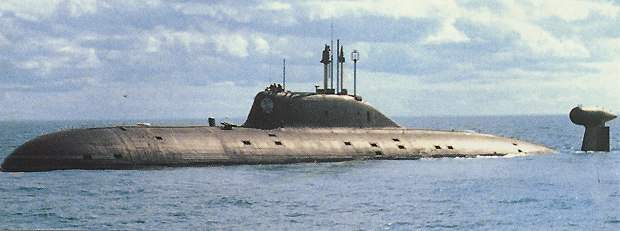Russia’s Akula-class submarines, deployed since the mid-1980s, remain a cornerstone of the country’s nuclear attack sea-based force. Designed for global dominance, particularly against the U.S. Navy, these fourth-generation nuclear-powered SSNs boast unparalleled acoustic stealth capabilities, outmatching many contemporary counterparts.

Photo: Naval Technology
Technological Prowess
Built under Project 971, the Akula-class submarines, including notable vessels like Ak Bars, Barnaul, and Kuzbass, are equipped with a powerful OK-650B pressurized water reactor. This reactor, with a thermal power output of 190 MW, contributes to the remarkable stealth and longevity of the Akula-class.
The Akula-class submarines, leveraging Western technology to reduce noise levels, disrupted NATO’s historical advantage during the Cold War. Their quietness, achieved through double-hulled configuration, high aft fin, and active noise cancellation techniques, has posed challenges for anti-submarine warfare specialists.
Armed with formidable weaponry, each Akula-class submarine can carry up to a dozen Granit submarine-launched cruise missiles, enhancing its versatility. The Novator SS-N-15 Starfish and Novator SS-N-16 Stallion anti-ship missiles further solidify their offensive capabilities.
READ ALSO: Russia’s Akula-Class Attack Submarines Have Just One Mission
Akula-II and Challenges
The Akula-II, exemplified by the Vepr, introduced advancements with lower acoustic signatures, rivaling American Los Angeles-class submarines. However, cost constraints hindered the completion of additional Akula II submarines, each associated with a substantial price tag.
The tragic incident involving the K-152 Nerpa during sea trials in 2008, where a firefighting system malfunction led to casualties, highlighted safety challenges. Despite setbacks, the Akula-class submarines continue to symbolize Russia’s naval prowess.
READ ALSO: Why Russia’s Akula-Class Submarine Scares the U.S. Navy























